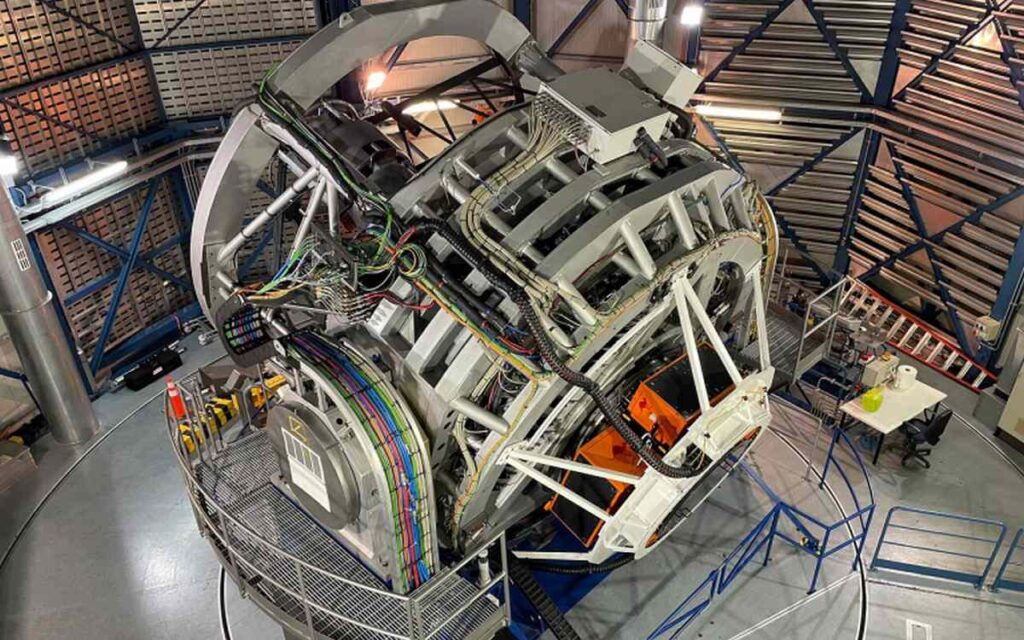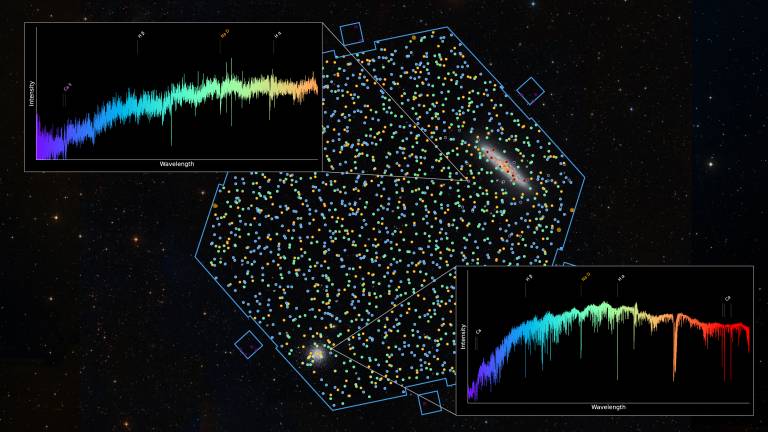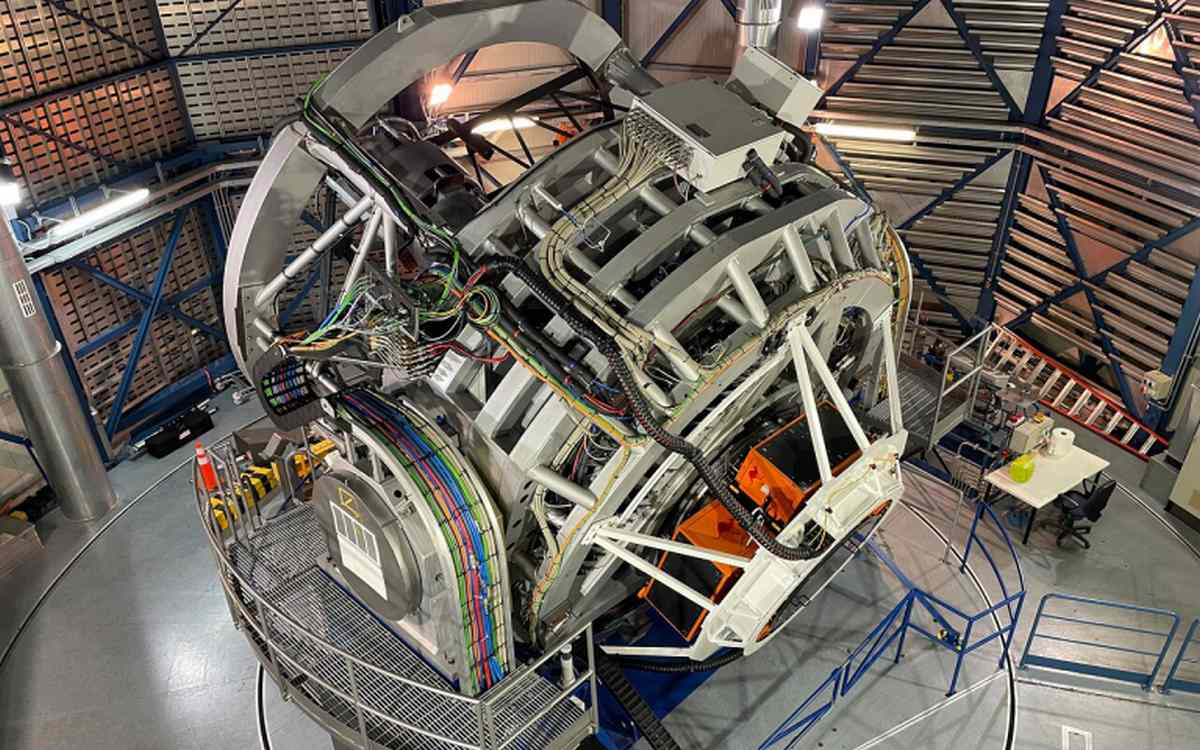 ESO’s 4MOST instrument – Credit, AIPA / Saviauk
ESO’s 4MOST instrument – Credit, AIPA / Saviauk
The world’s largest spectroscopic telescope has just recorded the first observations from its new perch high in the mountains of Chile.
Capable of revealing new information about any cosmic object or phenomena an astronomer cares to study, the telescope will feature in 25 important science programs over the next 5 years that involve 700 different scientists from all around the world.
Called the 4-meter Multi-Object Spectroscopic Telescope (4MOST), it’s the newest instrument at the European Southern Observatory (ESO) in Paranal, Chile. Experts from University College London played a key role in its installation and operation.
One of the most important methods of examining space is spectroscopy, or the study of light spectra. It’s an observational science which can tell astronomers what distant objects are actually made of by examining the wavelengths of light and the colors which appear through them.
Different color ratios can tell physicists whether a distant object is made of gases, solids, or liquids, whether those gases include those which make up an atmosphere, whether those solids could be iced water, metals, or carbon-bearing silicates: any of which might suggest it’s an interesting body to study for closely.
But 4MOST is unlike any spectroscope ever built. It can unravel the light of 2,400 celestial objects simultaneously into 18,000 color components.
By analyzing these thousands of colors from thousands of objects every 10–20 minutes, 4MOST will build a catalogue of temperatures, chemical compositions, velocities, and other physical parameters of tens of millions of objects spread across the entire southern sky, which will be available to any curious astronomer looking for data to explore any number of hypotheses for decades to come.
“It’s fantastic to see the first light data arriving from 4MOST,” said UCL physics professor Richard Ellis, who will be using the instrument to study supernova explosions. “Our team will be undertaking follow-up spectroscopy of various transient events located by the newly-completed Vera Rubin imaging telescope in Chile.”
UCL was accompanying the Leibniz Institute for Astrophysics at Potsdam, which was the lead institute in the development of 4MOST. Lead Investigator from the Leibniz Institute Roelof de Jong spoke with UCL press on his emotions at the instrument’s first spectra.
 The image of the Sculptor Galaxy taken by 4MOST – Credit, Foreground: AIPR, de Jong, CRALJ.-K. Krogager / Background: Harshwardhan Pathak/Telescope Live
The image of the Sculptor Galaxy taken by 4MOST – Credit, Foreground: AIPR, de Jong, CRALJ.-K. Krogager / Background: Harshwardhan Pathak/Telescope Live
“It is incredible to see the first spectra from our new instrument. The data looks fantastic from the start and bodes well for all the different science projects we want to execute,” de Jong said.
MORE OF ESO’S INSTRUMENTS: Vera Rubin Observatory Debuts Stunning Celestial Photos to Rival the James Webb Space Telescope–LOOK
“That we can catch the light that has traveled sometimes for billions of light years into a glass fiber the size of a hair is mindboggling. An incredible feat only made possible by an incredible development team. Can’t wait till having the system operating every night.”
Those glass fibers, of which there are more than 2,400 at the heart of the telescope, enables 4MOST to execute many science programs simultaneously. For example, a few fibers can be used to study rare objects, while at the same time another program can use most other fibers to make large statistical samples of stars or galaxies.
An image released by the ESO of 4MOST’s first observations show the sky around the Sculptor Galaxy NGC 253, in which each colored dot represents the focus of one of the 2,400 fibers. The rainbow colored charts to the left and right show the wavelengths coming off these objects; each color representing different material elements.
SHARE This Exciting New Instrument For Studying The Stars On Social Media…

